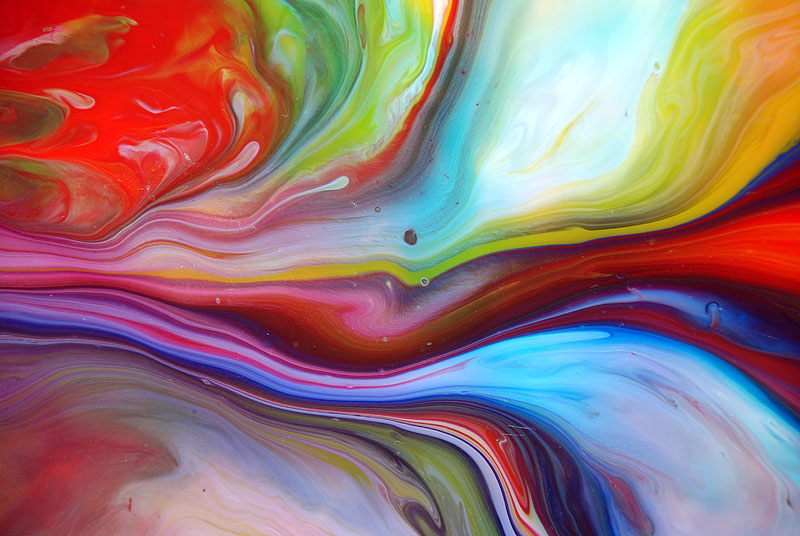Art has the extraordinary power to transcend the confines of the canvas, reaching deep into the recesses of our hearts and minds to evoke emotions, provoke thoughts, and ignite our imagination. In this article, we embark on a journey through the world of expressive paintings that go beyond mere aesthetics, leaving an indelible mark on the soul of the viewer. From raw emotion to profound symbolism, each artwork serves as a window into the human experience, inviting us to explore the depths of our own humanity.
Introduction: The Power of Expressive Art
Expressive paintings are not merely images captured on canvas; they are windows into the soul of the artist and the viewer alike. These artworks possess a rawness and authenticity that resonate on a visceral level, stirring emotions, challenging perceptions, and sparking introspection.
In this exploration of expressive art, we delve into the works that speak to the essence of what it means to be human, transcending the boundaries of time, culture, and language.
Raw Emotion Unleashed: The Human Experience in Color and Form
At the heart of expressive art lies the raw, unfiltered expression of emotion, conveyed through color, form, and gesture. Artists like Vincent van Gogh, Edvard Munch, and Frida Kahlo captured the tumultuous depths of the human psyche in their works, offering a poignant glimpse into the joys, sorrows, and struggles of existence.
Van Gogh’s “Starry Night” is a swirling maelstrom of emotion, with its vibrant colors and dynamic brushwork reflecting the artist’s inner turmoil. Munch’s “The Scream” is a haunting portrayal of existential angst, its distorted figure and frenzied lines capturing the visceral terror of modern life. Kahlo’s self-portraits, with their raw vulnerability and unflinching honesty, invite viewers to confront their own pain and resilience.
Symbolism and Allegory: Layers of Meaning Beneath the Surface
Expressive paintings often employ symbolism and allegory to convey deeper layers of meaning and significance. Artists like Hieronymus Bosch, William Blake, and Salvador Dalí used symbolism to explore themes of spirituality, morality, and the human condition. Bosch’s “The Garden of Earthly Delights” is a surreal journey through heaven, earth, and hell, its fantastical imagery serving as a cautionary tale against the sins of humanity.
Blake’s “The Ancient of Days” is a mystical depiction of God as the divine architect of the universe, its intricate symbolism inviting viewers to contemplate the mysteries of existence. Dalí’s “The Elephants” is a dreamlike exploration of time and memory, with its melting forms and enigmatic imagery challenging our perceptions of reality.
Social Commentary and Protest: Art as a Catalyst for Change
Expressive art has long been used as a powerful tool for social commentary and protest, shining a spotlight on injustice, inequality, and oppression. Artists like Francisco Goya, Pablo Picasso, and Keith Haring used their works to challenge the status quo and advocate for social change. Goya’s “The Third of May 1808” is a harrowing depiction of the horrors of war, its stark realism and emotional intensity serving as a condemnation of violence and tyranny.
Picasso’s “Guernica” is a searing indictment of the atrocities of war, its fragmented forms and anguished figures bearing witness to the suffering of innocent civilians. Haring’s “Silence=Death” is a bold call to action in the face of the AIDS crisis, its vibrant colors and powerful symbolism demanding justice and equality for marginalized communities.
Identity and Representation: Celebrating Diversity and Empowerment
Expressive art plays a crucial role in celebrating diversity and empowering marginalized voices, offering a platform for artists to explore issues of race, gender, sexuality, and identity. Artists like Frida Kahlo, Jean-Michel Basquiat, and Yayoi Kusama embraced their own identities and experiences in their works, challenging stereotypes and reclaiming their narratives. Kahlo’s self-portraits, with their unapologetic depiction of her Mexican heritage and physical disabilities, are a powerful celebration of resilience and self-acceptance.
Basquiat’s graffiti-inspired paintings, with their bold colors and expressive lines, confront issues of race, power, and representation in contemporary society. Kusama’s immersive installations, with their mesmerizing patterns and infinite reflections, offer a transcendent experience of self-discovery and empowerment.
Conclusion: The Enduring Legacy of Expressive Art
As we conclude our journey through the world of expressive paintings, we are reminded of the enduring legacy of art as a transformative force in our lives. From the raw emotion of van Gogh’s brushstrokes to the powerful symbolism of Dalí’s surreal landscapes, each artwork invites us to delve deeper into the complexities of the human experience and discover new dimensions of our own humanity.
As viewers, we are called to engage with these works with open hearts and minds, allowing them to stir our souls, provoke our thoughts, and inspire our actions in the world. For it is through the power of expressive art that we find connection, empathy, and understanding in an ever-changing world.

